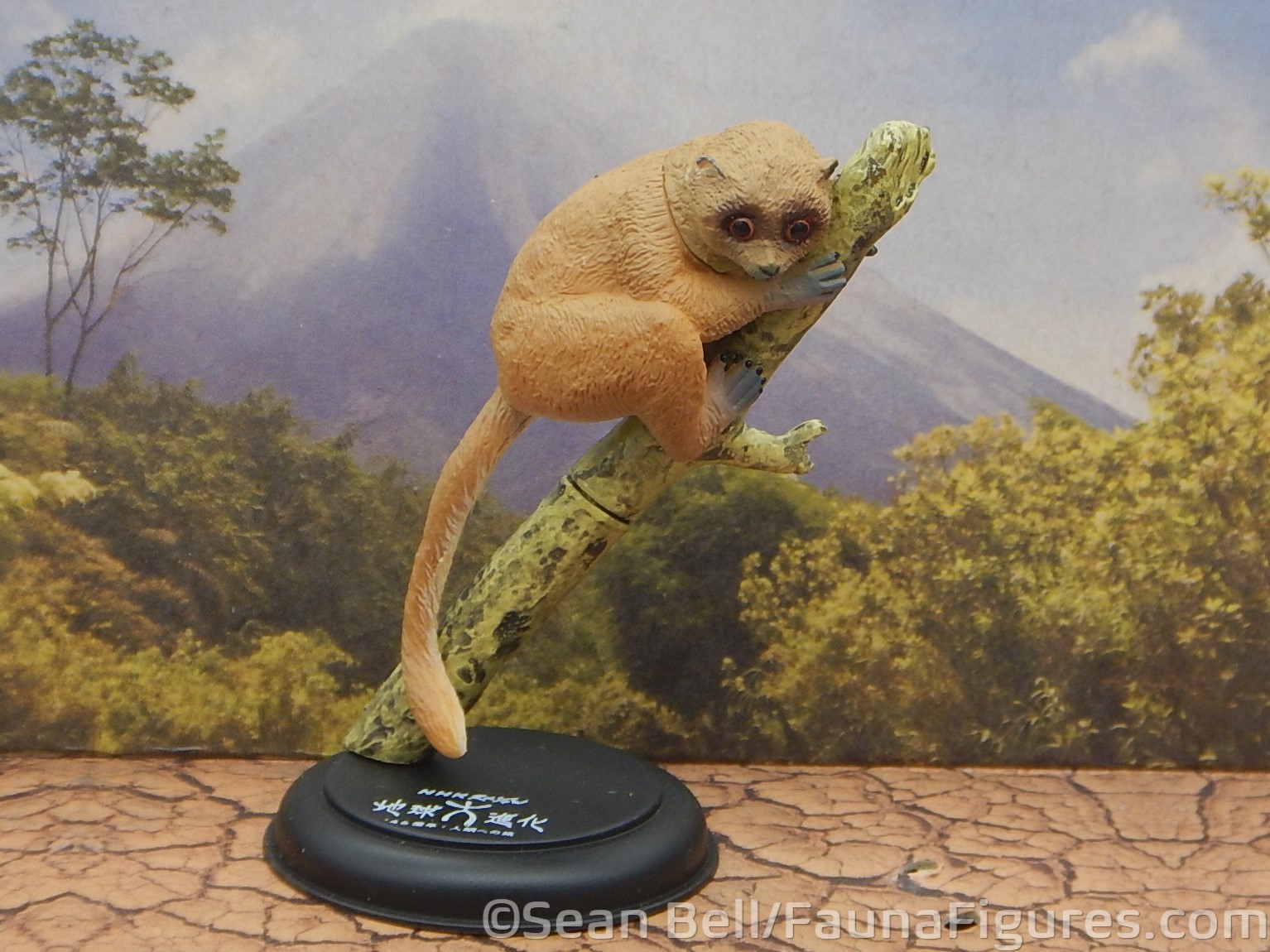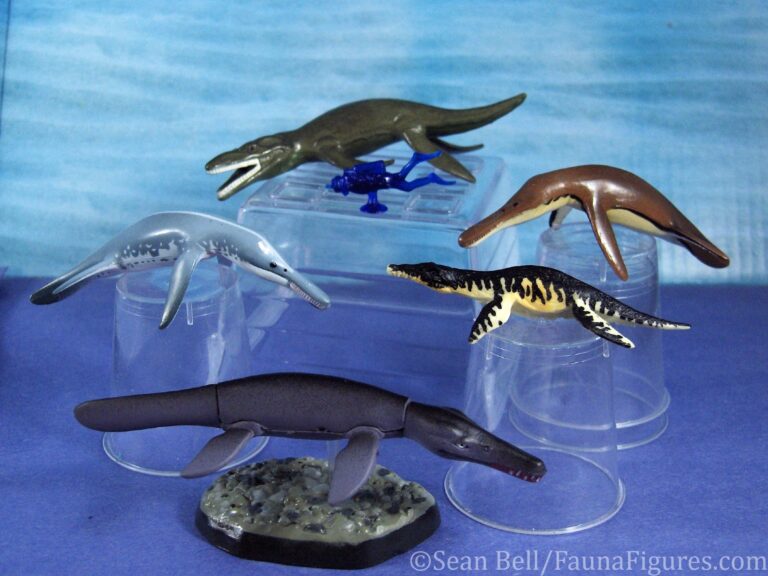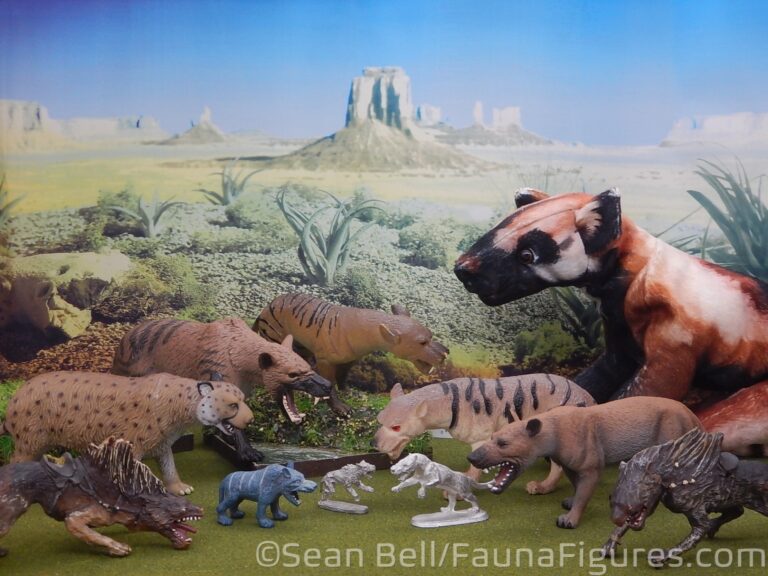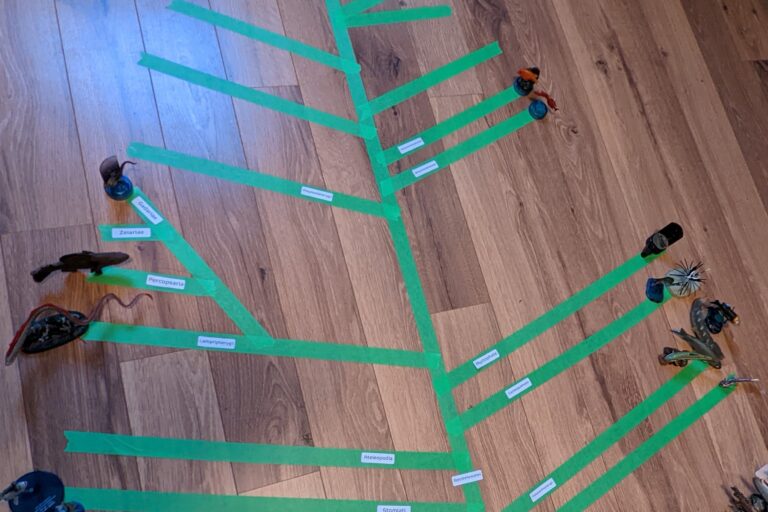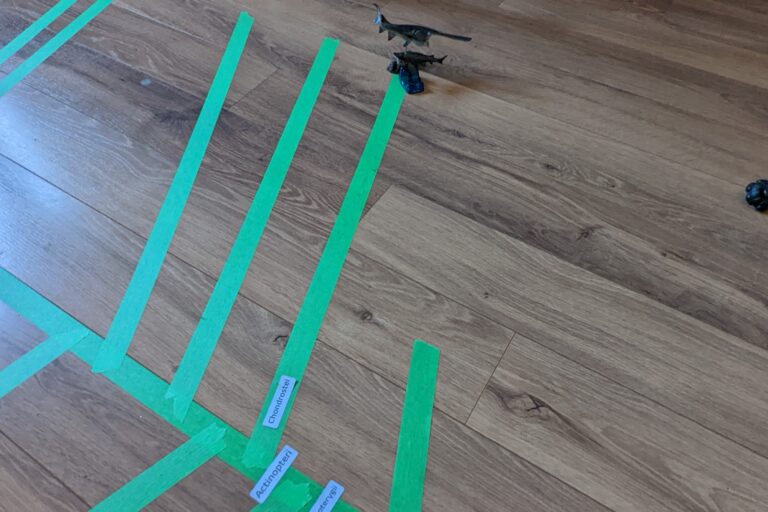Well, here again with another ‘Clades’ post which…is another one that can get tricky. I think the name clade has become tricky because of how I broke everything down…but I know what I mean! Anyway, this one will touch upon the ‘Haplorhini’ which in my database, refers to the basal members of the group of primates that includes the modern Tarsiers, Monkeys, Apes, and Humans (all of which are divided into higher groups of course). At the base of this group would be placed animals that may be precursors or sister groups to the tarsiers, the omoyiformes. In terms of figures in a collection, which is how I orient these posts, I am aware of only that has ever been made, the Yujin Tetonius.
The Haplorhini is one of two major clades within the Primates, arising early in the Palaeocene when they diverged from the Strepsirrhini (the modern lemurs and lorises). The fossil record is sparse, especially near the base, so there is still a lot of work determining the true origins and placement of the early known taxa. Apparently an earlier group, Archicebidae, may be more basal on the haplorhine lineage, a sister to the Omyidae (+Tarsiidae?). More fossils would probably help. This also points to a different hypothesized organization of the Haplorhini, where tarsiers and omomyids form a sister clade to the rest of the clade (the ‘anthropoids’ or ‘simians’). From the point of view of the figures on my shelf, it doesn’t alter much; having the only omomyid as the basal to everything else works until it doesn’t!
Many of the features that unite appear to be soft tissue or genetic…so there is some question about whether an omomyid like Tetonius would even be in this particular clade…some workers place them as stem tarsiers, and others as basal or proto-primates! Again, I’ll keep them here unless things change. Most of those features include ‘dry’ noses, unlike those of most mammals; the inability to manufacture Vitamin C; and a free upper lip (so, not exactly things that fossilize). The main skeletal feature that would show up in a fossil would be a postorbital plate instead of a bar (my physical anthropology degree is giving me flashbacks…). Omomyids had a holarctic distribution, although of course modern non-human haplorhines are now distributed differently, being found in Africa, Eurasia and South America, but no longer North America after the Eocene.
As a group, haplorhines were important parts of fossil fauna, and for displays of Palaeocene or Eocene faunas they would certainly belong there. Of course, that would assume that there are any. In my case, I was lucky to get the Yujin NHK set when it came out in 2004, and it includes the omomyid Tetonius. And of course, it is quite a large figure, relative to the few other species that might be found from the appropriate time and place. Of course, that implies that it might be possible to find any other appropriate figures from the correct time and place (from a cursory glance…probably not). But as a group to represent in a collection, it’s nice to get some of these more basal and ancestral models in there. It’s too bad the only one out there is not only out of production but also quite hard to find. But maybe eventually one of our favorite companies might make some of the smaller prehistoric mammals, it can’t all be mammoths and sabretooths!

